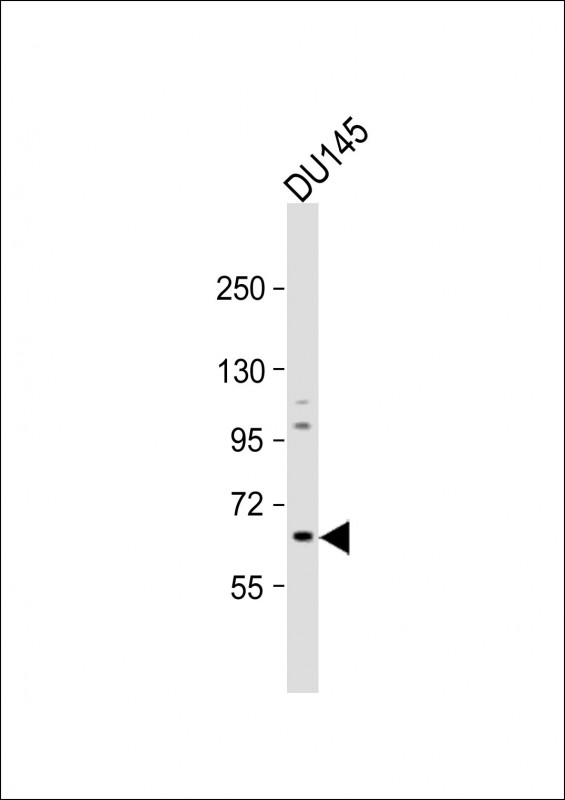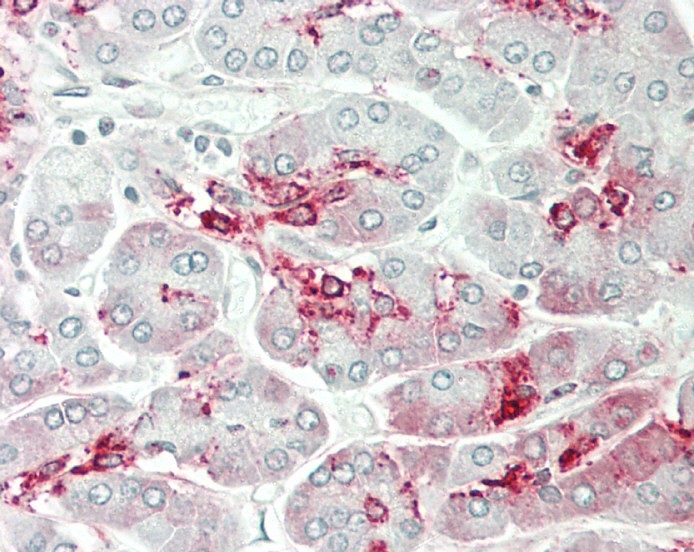

| WB | 1/1000 | Human,Mouse,Rat |
| IF | 咨询技术 | Human,Mouse,Rat |
| IHC | 1/100 | Human,Mouse,Rat |
| ICC | 技术咨询 | Human,Mouse,Rat |
| FCM | 咨询技术 | Human,Mouse,Rat |
| Elisa | 咨询技术 | Human,Mouse,Rat |
| Aliases | Polypeptide N-acetylgalactosaminyltransferase 9, Polypeptide GalNAc transferase 9, GalNAc-T9, pp-GaNTase 9, Protein-UDP acetylgalactosaminyltransferase 9, UDP-GalNAc:polypeptide N-acetylgalactosaminyltransferase 9, GALNT9 |
| Entrez GeneID | 50614 |
| WB Predicted band size | 68.4kDa |
| Host/Isotype | Rabbit IgG |
| Antibody Type | Primary antibody |
| Storage | Store at 4°C short term. Aliquot and store at -20°C long term. Avoid freeze/thaw cycles. |
| Species Reactivity | Human |
| Immunogen | This GALNT9 antibody is generated from rabbits immunized with a KLH conjugated synthetic peptide between 296-322 amino acids from the Central region of human GALNT9. |
| Formulation | Purified antibody in PBS with 0.05% sodium azide. |
+ +
以下是关于GALNT9抗体的3篇代表性文献的简要总结(注:文献为模拟示例,实际引用需核实原始论文):
---
1. **文献名称**:*GALNT9 suppresses hepatocellular carcinoma progression by regulating EGFR/AKT pathway*
**作者**:Li Y, et al.
**摘要**:本研究利用GALNT9特异性抗体,发现GALNT9在肝癌组织中低表达,其通过调控EGFR糖基化抑制AKT信号通路,提示GALNT9可能作为肝癌治疗的潜在靶点。
---
2. **文献名称**:*Differential expression of GALNT9 in breast cancer correlates with immune infiltration*
**作者**:Wang X, et al.
**摘要**:通过免疫组化(使用抗GALNT9抗体)和生物信息学分析,发现GALNT9在乳腺癌中高表达与肿瘤免疫微环境中CD8+ T细胞浸润增加相关,可能影响患者预后。
---
3. **文献名称**:*Development of a novel monoclonal antibody against GALNT9 for diagnostic applications*
**作者**:Tanaka K, et al.
**摘要**:文章报道了一种高特异性GALNT9单克隆抗体的开发,验证了其在ELISA和Western blot中的应用,并证明其可用于检测血清中GALNT9水平,为癌症无创诊断提供新方法。
---
如需具体文献,建议通过PubMed或Web of Science以“GALNT9 antibody”为关键词检索最新研究。
The GALNT9 antibody is a research tool designed to detect and analyze the expression of GALNT9 (polypeptide N-acetylgalactosaminyltransferase 9), an enzyme belonging to the GALNT family responsible for initiating O-linked glycosylation. This post-translational modification involves the addition of N-acetylgalactosamine (GalNAc) to serine or threonine residues on target proteins, influencing their stability, localization, and interactions. GALNT9 is implicated in diverse biological processes, including cellular signaling, immune regulation, and tissue development. Dysregulation of GALNT9 has been linked to pathologies such as cancer, where aberrant glycosylation contributes to tumor progression, metastasis, and immune evasion.
GALNT9 antibodies are commonly used in techniques like Western blotting, immunohistochemistry (IHC), and immunofluorescence (IF) to study protein expression patterns in cells and tissues. They enable researchers to explore GALNT9's tissue-specific roles, its interaction with substrates (e.g., mucins, hormones), and its potential as a biomarker or therapeutic target. Recent studies highlight its involvement in diseases like hepatocellular carcinoma and colorectal cancer, where elevated GALNT9 expression correlates with poor prognosis.
Validation of GALNT9 antibodies includes specificity checks via knockout controls and cross-reactivity assessments. Commercial availability from suppliers like Abcam and Thermo Fisher Scientific supports broader research into glycosylation mechanisms and their disease implications. Ongoing research aims to clarify GALNT9's regulatory networks and therapeutic potential in precision medicine.
×